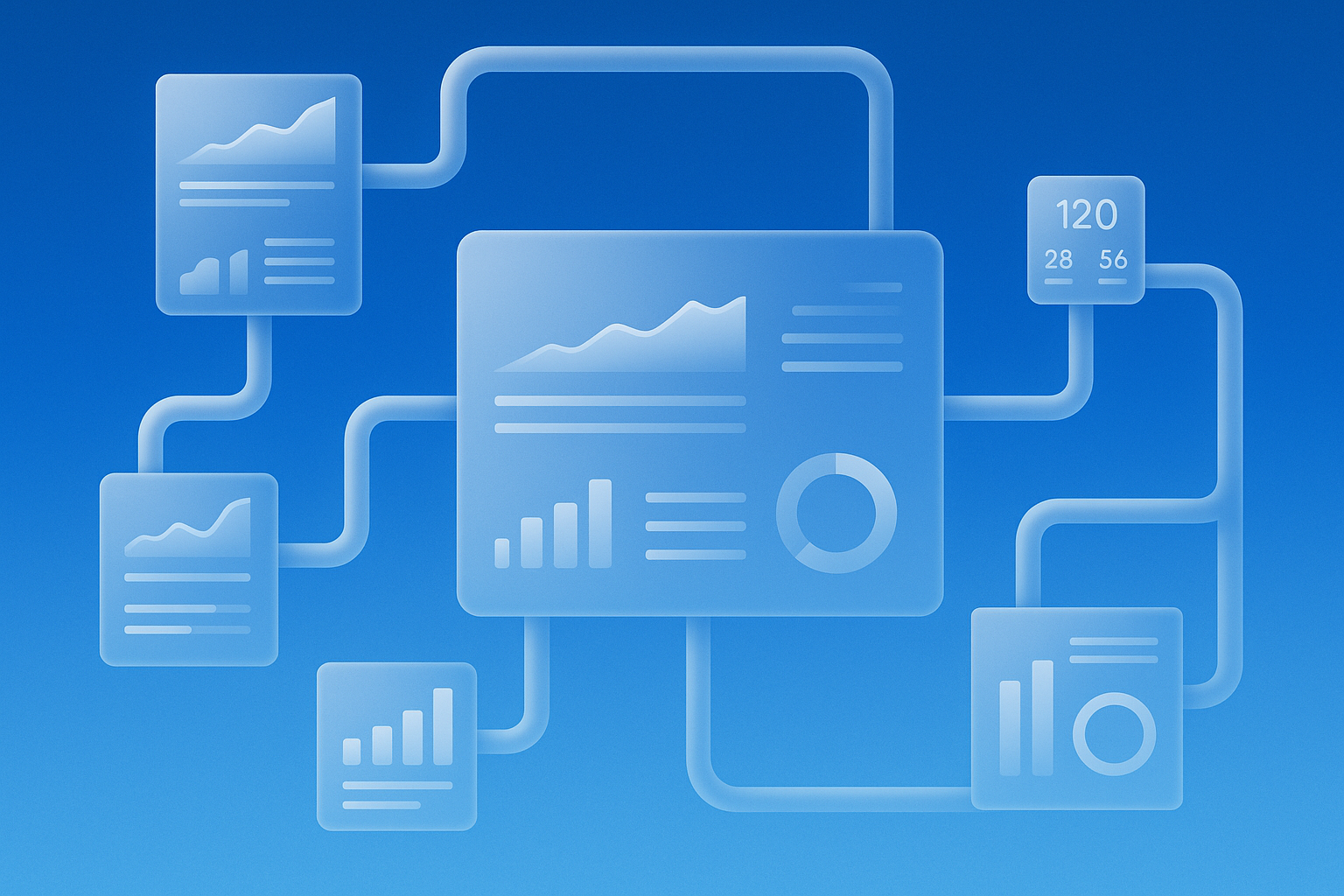What is portfolio monitoring software?
Portfolio monitoring software is built to help investment firms centralize, analyze, and act on data from their portfolio companies. Designed specifically for venture capital, private equity, and institutional investors, these tools offer a structured way to track performance metrics, monitor risks, build valuations, help with audits, power portfolio reviews, and meet LP reporting needs, all in one place.
Manual workflows and spreadsheet sprawl still dominate many firms. But as reporting expectations increase and data volume grows, these outdated approaches fall short. Portfolio monitoring software fills the gap, offering timely access to company metrics and reducing the friction between GPs, their internal teams, and their portfolio companies.
Why is portfolio monitoring critical for investors?
Today’s firms need to move quickly, and that requires trustworthy data. But traditional methods like managing Excel files and chasing email updates introduce delays and errors.
Investors also face increased scrutiny from LPs. Quarterly updates, ad-hoc requests, and due diligence questions all depend on reliable, up-to-date portfolio metrics. Without a system in place, even simple questions can lead to days of scrambling.
As the volume and complexity of data grows, so does the cost of inaction. Centralizing reporting isn’t just about efficiency, it’s about being able to confidently respond to LPs, identify early risks, and make firm-wide decisions based on actual performance data.
What are key features of modern portfolio monitoring software?
Modern tools bring structure to a historically unstructured process. Key capabilities include:
- Real-time data aggregation from hundreds of portfolio companies into a single platform.
- Automated collection of financial statements, forecasts, and KPIs to reduce the ask on portfolio companies.
- Custom dashboards and filtered views by fund, sector, stage, or geography.
- Third-party integrations with tools like QuickBooks, LLMs, and data warehouses.
This isn’t just a prettier spreadsheet: it’s a complete process overhaul that can supercharge your investment operations.
Why should I use portfolio monitoring tools? What benefits do they provide?
Portfolio monitoring tools replace slow, manual workflows with real-time visibility and structured data, allowing investment teams to move faster and with more confidence. Instead of tracking down spreadsheets, chasing email updates, or wrangling last-minute numbers for LP reports, firms can rely on a centralized platform that aggregates financials, forecasts, and KPIs across their entire portfolio. This not only saves time but also reduces errors and inconsistencies: two of the biggest risks in traditional reporting processes. With cleaner data and automated workflows, teams can spend less time on admin and more time on strategic work.
These tools also improve how firms interact with both LPs and portfolio companies. For LPs, reporting becomes more consistent, transparent, and timely. For portfolio companies, structured reporting reduces the burden of repeated updates and builds better communication between GPs and their companies. Portfolio monitoring tools help surface risks earlier, benchmark performance, and support internal collaboration across finance, ops, and investment teams.
How are other venture capital firms using portfolio monitoring software? How does portfolio monitoring support different roles across the firm?
Portfolio monitoring isn’t a single-use case. It powers critical workflows across the firm:
- Quarterly reporting: Auto-generate fund updates with fresh data from all portcos.
- Board prep: Pull the latest metrics and benchmarks into board materials in minutes.
- Fundraising support: Quickly surface firm-wide KPIs and historical performance.
- Internal analysis: Investment and finance teams align around a shared view of portfolio health.
- Valuations: Sync financials and investment data directly into valuation models—no manual entry.
- Audit readiness: Maintain an auditable, centralized data source for key portfolio metrics.
- Portfolio review: Spot outliers, compare companies to benchmarks, and flag where follow-up is needed.
Portfolio monitoring also supports different roles across a venture capital firm by centralizing and automating access to key performance data, enabling each team to make faster, data-informed decisions. Investment partners can track portfolio health and identify follow-on opportunities more effectively, while finance teams streamline quarterly reporting and ensure accurate LP updates. Operating partners gain real-time insights into company metrics to offer targeted support, and analysts can surface trends and risks early through customizable dashboards. By reducing manual workflows and improving data transparency, portfolio monitoring software enhances collaboration and alignment across all functions in the firm.
Firms like TechNexus Venture Collaborative, Soccii Capital, and Madrona use tools like Standard Metrics to formalize workflows and improve collaboration across functions.
How do I choose the right portfolio monitoring platform?
Choosing the right portfolio monitoring platform comes down to finding a solution that fits your firm’s scale, workflows, and tech stack. Look for a tool that automates data collection, integrates easily with your existing systems (like accounting software, CRMs, and cap table tools), and offers customizable dashboards tailored to your reporting needs. A clean user experience is essential—not just for your internal team but also for portfolio companies who’ll be submitting updates. During demos, ask how onboarding works, what support is included, and how the platform handles accuracy and audit trails. The right platform should reduce friction, not add to it.
Why Standard Metrics is a great choice
Standard Metrics gives investment firms a flexible, auditable system for tracking portfolio performance. Data can be collected through AI-powered document parsing, direct founder input, or integrations with accounting tools. The platform structures this data for audit readiness, valuations, LP updates, and internal reporting, so finance and investment teams aren’t starting from scratch each quarter. Built-in benchmarking lets firms compare company performance to thousands of anonymized startups by sector and revenue scale. And with custom dashboards, filtered views, and secure sharing, Standard Metrics becomes a central hub for collaboration across teams. Whether you’re preparing board materials, building fundraising decks, or conducting a portfolio review, the platform helps you move faster and work from a single source of truth.
Portfolio monitoring software – FAQ:
What is the best portfolio monitoring software for venture capital?
Standard Metrics is widely used by VC firms for its ease of use, benchmarking capabilities, and support for automated data collection.
How does portfolio monitoring software collect data?
Through a combination of portfolio company input, AI-powered document parsing, and integrations with accounting, CRM, and cap table systems. Firms can choose the workflow that fits their portfolio—whether that’s uploading financial statements, piping in metrics from tools like QuickBooks and Salesforce, or having founders input data directly. AI speeds up parsing and reduces manual work, especially for high-volume or variable reporting formats.
Can it integrate with LLMs or accounting platform?
Yes. Leading tools offer plug-and-play integrations, an MCP, and API access to tools like Salesforce, Quickbooks, and ChatGPT.
Is portfolio monitoring software secure?
Yes. Look for platforms with SOC 2 compliance and enterprise-grade controls like Standard Metrics.
How long does it take to implement?
Firms can be live in a matter of weeks, especially if your portfolio already uses the platform for other investors.
Who are some of the largest VC firms using Standard Metrics?
Standard Metrics serves over 100 firms and 9,000 companies. Customers include Spark Capital, Munich RE, Data Collective, March Capital, and Titanium Ventures.
Streamline reporting and maximize insight
Spreadsheets were never designed to support modern investing. With portfolio monitoring software, firms save time, improve data quality, and build stronger LP relationships.
If your team is still chasing down numbers each quarter, it might be time to switch gears.
Explore how Standard Metrics can automate your portfolio monitoring and reporting.
Automate your portfolio reporting
Find out how you can:
- Collect a higher volume of accurate data
- Analyze a robust, auditable data set
- Deliver insights that drive fund performance

